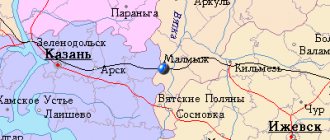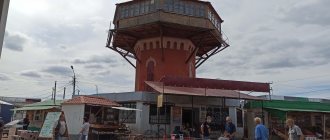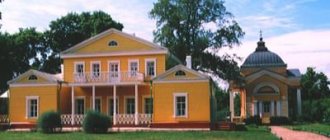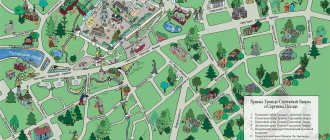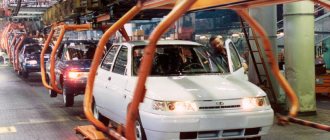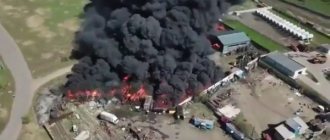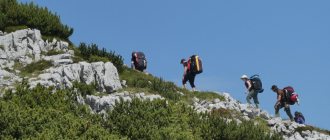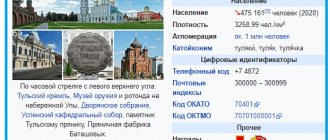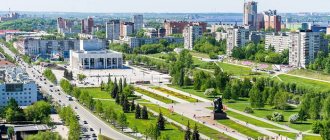A traveler from Yekaterinburg and our friend Anna Kolokolova shared with the Gorodskievesti.ru portal picturesque photographs that were taken near Pervouralsk, on the Chusovaya River. On them are St. George's Stone, Gulyai-Stone, Annushkin Bridge, the village of Kamenka and the scenery for the Soviet film “Gloomy River”. Anna says that the banks of Chusovaya are one of her favorite places.
- Chusovaya - she is eternal, calm, alive. Bizarrely winding throughout the Urals. Like a true woman who can’t decide where she prefers: in Europe or Asia,” Anna writes in her blog. “It’s especially good there in May, when the snow has already melted, the paths have dried up, the first flowers are climbing out of the ground, the forest is full of bird trills, and the river floods to its full width, finally throwing off the annoying winter shackles.
View of the village of Sloboda and the Chusovaya River. Photo // Anna Kolokolova
The attractions are located near the village of Sloboda, one of the oldest in the Middle Urals. It was founded in 1651. Historians say that Vasily Tatishchev considered Chusovskaya Sloboda (this is the old name of the village) as the mining capital of the Urals, but ultimately chose Yekaterinburg. As the portal “Our Ural” writes, the main decoration of the village is the temple in the name of St. George the Victorious. In Soviet times, this church (one of the few) was not desecrated or closed.
Chusovaya divides the village of Sloboda into two parts. You can cross from one bank to the other via a hanging bridge. There, near the bridge, is the St. George's Stone.
Click to go to the website of the country club “At Mount Volchikha”
On the website, which is entirely dedicated to the sights of the Chusovaya River, they say that in 1651 a chapel was built on top of an unnamed stone, the main shrine of which was the icon of St. George the Victorious. The chapel was burned during an attack by the Bashkirs, and a stone was later named in its honor.
This is how nature near the St. George's Stone and the Chusovaya River look in spring. Photo // Anna Kolokolova
The artist Alexey Denisov-Uralsky, after visiting the St. George's Stone (back in the 19th century), painted a painting of the same name. And Sverdlovsk photographer Veniamin Metenkov captured himself at the grotto, which is located in the St. George’s Stone. By the way, archaeologists once found household items of an ancient man in this grotto.
— If you walk under the rocks, you can climb into a small cave. What if there are once again hidden treasures there that have not yet been found,” laughs Anna Kolokolova.
St. George's Stone is a favorite place for rock climbers and weekend hikers.
The Sentinel Stone continues the array of St. George's Stone. It's like he's guarding the river. Photo // Anna Kolokolova
A couple of hundred meters later, another picturesque massif is the Gulyai-stone, also known as the Sentinel stone. The cliff hangs over the water, as if guarding the waterway. According to legend, it is not easy to get around, which is why rafters gave it this name.
The St. George and Hour stones can be seen in the film “The Gloomy River” by Yaropolk Lapshin. From the top of the Sentinel Stone at the end of the film, the main character falls into the river.
If you walk from the stones a little higher along the river, you can see a hundred-meter-long suspension bridge. It was built in 2013 with funds from philanthropist Anna Manekina. That's why the bridge is called Annushkin. In 2016, it was washed away by a flood, but it was restored. Photo // Anna Kolokolova
If you drive a little further along the Shali highway and turn towards the village of Kamenka, you will see old wooden decorations. During Soviet times, the Sverdlovsk Film Studio shot several films here. Ural traveler Pavel Raspopov says that these are the main attractions of the village. The films “Semyon Dezhnev” and “The Demidovs” were filmed here in 1983, “The Golden Woman” in 1986, “The Kidnapping of the Sorcerer” in 1989, and “The Life of Alexander Nevsky” in 1991. Of course, most of the wooden buildings have already been destroyed.
The decorations stood in the village of Kamenka for several decades. Photo // Anna Kolokolova
Pervouralsk: attractions and interesting places
Pervouralsk is a city in the Sverdlovsk region, a large industrial and cultural center of the region.
The date of foundation is considered to be December 1, 1732, the day when the blast furnace of the ironworks produced the first cast iron. True, at that time it was not yet a city, but a village near a factory and it was called Vasilyevsko-Shaitansk. The settlement received its current name only in 1920. The city stands on a large water artery of the Ural region, the Chusovaya River, along which at one time the famous iron caravan, barges loaded with millions of pounds of cast iron, iron and products made from them, walked.
Sights of Pervouralsk
Pervouralsk owes its birth to the discovery of an iron ore deposit near Mount Volchaya (Volchikha) in 1702. In the summer of 1730, Nikita Demidov’s grandson, Vasily, began construction of a plant on the Shaitanka River. The river was “closed” with a one hundred and twenty fathom dam. Behind it stood factory buildings: a blast furnace, a fur and fur factory, a forge. On December 1, 1732, the first cast iron was smelted at the plant.
This is what the dam looked like. The body of the dam is made of larch and has not been rebuilt since its construction. It’s logical to start your city tour from here. This is what the dam looks like now.
The old photograph clearly shows the Temple in the name of the Holy Apostles Peter and Paul. The first wooden church was consecrated in 1752; it stood near the Moscow highway; there were 5 bells on the belfry. In the summer of 1821, a fire raged in the village and the church burned down. Instead, in 1822, the construction of a new temple was completed.
In 1930, the temple was closed, and at different times there were in this building a cinema, a local history museum, a weight repair shop, and a sausage factory. Then the building was blown up. Since 1990, the Temple has been revived, and the ringing of bells again floats over the city.
From the old dam you need to walk along the embankment, lined with slabs, to the bend. At the turn of the road, a two-story wooden house has been preserved. By its location you can determine where the main street, Lenin Street, was located. It housed administrative buildings, a bank, a bookstore, etc. The Moscow Highway passed along this street. While landscaping the area near another high-rise building (a yellow house on the shore of a pond), a part of old paving stones was found.
On the wide alley of Vatutina Street is a traditional gathering place for veterans of all branches of the military. From this place a wide staircase leads up to the current city center. At the very top you can see the Palace of Culture of the Novotrubny Plant.
We go up the steps, sometimes we stop to rest, and turn around!
Here we are on the square near the NTZ Department of Culture and Culture. The palace itself was built in 1969; its model was exhibited at the World Exhibition in Montreal. Magnificent mosaic panels on the facade symbolize work, creativity, science, creation.
Next to the palace is the Central City Library, with an excellent local history department. There are always exhibitions in the library - check it out, you won’t regret it! In summer there is a fountain. During the daytime, the square is full of mothers and grandmothers walking with their children; in the evening, it is a favorite place for young people.
The central square of the city is Victory Square. Naturally, a monument to Lenin. The city administration building, a once gray three-story building, is now decorated with “chimes” and illuminated at night.
This is where we begin our architectural journey. Before us is that part of Vatutina Street, which was built in the 50s of the 20th century. The houses are three-story, cinder block, decorated with stucco elements typical of classical architecture. The year of construction is sculpted on some houses.
Let's walk a block along Vatutina Street to the intersection with Herzen Street and turn right, walk between houses with turrets, walk one block and end up in the Park of Culture and Leisure. It’s worth a look - an island of real forest almost in the center of the city! Convenient playgrounds, benches, swings, attractions...
The mini-zoo in the park deserves attention; a ticket costs only 60 rubles, and you will get a lot of pleasure from interacting with the animals. You can see Altai deer, mouflons, camels, wolves, foxes, noses and almost all domestic animals - sheep, goats, ducks, geese, chickens, turkeys and many others. Among the exotic ones are ostriches.
If you're lucky, you can feed the squirrels; they are loved, protected, and pampered in the park...
After a walk in the park, we go back along Herzen Street, cross the already familiar Vatutina Street and immediately turn left into the courtyards. Once upon a time, the courtyards had flower beds, gazebos, fountains, cast fences... And now we find ourselves in a 1957 construction area. It was from here that the construction of large-panel residential buildings began. On one of them there is a sign: “The first panel residential building in Pervouralsk. Commissioned in May 1958." Living history!
And here is the house itself.
This birch grove was lovingly planted by the residents. How carefully the townspeople treated the new areas, how lovingly they equipped them!
We go further, we go out onto Chkalov Street. This yellow house houses the Metallurg cafe and the Assol snack bar - you can refresh yourself.
This is the area of the first multi-storey brick houses, construction of the 30s and 40s, as stated on the sign on the house at Herzen 7.
The next intersection takes us to Trubnikov Street. It is easy to recognize - one side of the street is made up of two-story houses, the other - five-story ones. Behind these five-story buildings is the Ship Grove. All that remained was the name - ship grade pine trees were straight, tall pine trees, without flaws, which were suitable for making ship masts. They gave the name to the area. Paradox - the birch grove is called Korabelnaya. This street arose along the road to neighboring Revda.
At the end of the street we see the only surviving wooden cottage. There were several such cottages on Shkolnaya, Volodarskogo, Papanintsev streets; in the courtyards there were cozy squares, sculptures, and fountains. There are still photographs of the “Elephant” fountain. The rotunda has survived to this day, although not in the best condition.
Then we move past the mosque and find ourselves in the village of the chrome peak plant. The history of the village begins in 1915; it was built next to the plant. The center of the village is the Lenin Club with a park and stadium. In the village there are monuments to Julius Fuchek and General Karbyshev.
Through the village we go to the railway station. From here you can go to Yekaterinburg. But it’s interesting to see another monument; not all Pervouralsk residents know about its existence. The memorial complex to the heroes of the Civil and Great Patriotic Wars was installed on the square near the plant management of JSC Khrompik. To see it you need to cross the railway pedestrian bridge.
Our little journey has come to an end. This article contains only a small corner of the city. I suggest you just come and see!
Innovation cultural center
The construction of the ICC took place with money from the federal budget, lasted three years, and was completed in 2016. Due to its unusual shape, the building was nicknamed the “innovative puck” and indeed it resembles this sports equipment. The building attracts attention, especially at night, as the unusual kinetic façade glows in the dark.
Within the walls of the ICC there are: a museum of mining civilization; design and invention laboratory; studio-museum of animation, occupies two whole floors; cinema. Exhibitions, concerts, festivals, competitions, educational and social events, city holidays and even sports competitions are regularly held here.
What is it like to live in Pervouralsk in winter?
The city's population grew until 2015, and then decreased by 5 thousand people to 120 thousand by 2022. At its peak, 144 thousand people lived in the city in the early 1990s.
The average salary in the city for 2022 was about 40 thousand rubles. According to vacancies for the last year, the average salary is 33 thousand. Among the highest paid professions are a dump truck driver with 75 thousand rubles, an engineer in the production and technical department - 67 thousand, and a reinforced concrete concrete installer - 64 thousand.
The city’s plans by 2035 “to ensure the development of Pervouralsk as a large industrial center, comfortable and safe for prosperous living and business activity,” this is spelled out in its strategy.
There are places to walk in the city center in winter; it looks very well maintained. The facades of the houses have been renovated and look almost like new buildings. But it all looks like stage decoration. Take a look at this beauty first and see the back below.
But if you turn off the main street, the picture changes.
The average level of leisure, sports and children's organizations seems to be clearly visible from this photograph. But there is an exception - Quantorium has reached this city, and such organizations must provide factories with specialists in the future.
The innovative cultural center, where one floor is occupied by the Museum of Mining Civilization, opened in 2016. There is a design and publishing laboratory with a 3D printer, programming courses, areas with an enlarged tactile keyboard for the visually impaired, and a forum center. Local residents called this seven-story building.
Ski resort "Mount Pilnaya"
There was once a sawmill on the mountain from this fact, and the name Pilnaya came about. Currently, the mountain is located within the city limits. There are four ski slopes on its slopes, with a total length of almost three kilometers, with a maximum elevation difference of 100 meters.
For comfortable skiing, the resort has a convenient infrastructure. There are two modern lifts; cafes and rentals where you can rent skis or snowboards, as well as everything you need for skiing. For visitors who come with children, there is a children's room and a children's skating school. At night, the track is illuminated, which creates a special atmosphere when skiing.
Stela Europe – Asia
Not far from the city on the slope of Mount Berezovaya, there is the highest point of the Siberian Highway. Here, back in 1837, a memorial sign Europe - Asia was installed, it was installed specifically for the arrival of Alexander II, who traveled here with the poet Vasily Andreevich Zhukovsky.
Initially, the monument was wooden in the shape of a pyramid, and later it was replaced by a majestic stone stele with a double-headed eagle at the top. During the Civil War, the monument, crowned with the symbol of royal power, was destroyed. The Soviet authorities also erected a stone memorial sign, much more modest than in Tsarist times. Now it has been moved a little lower to the water source. The monument acquired its modern appearance in 2008. Now it is a stele made of red granite, screwed on, as in pre-revolutionary years, with a double-headed eagle.
People's House
The only architectural monument of the 19th century in Pervouralsk. The exact date of construction of the house is unknown. The building was once part of a city estate, which, in addition to the main house, also included a barn, a massive gate and several outbuildings.
To this day, only the main house of the estate has survived. This is a two-story building, built in the traditional style of the 19th century, the first floor is brick, the second is wooden. The house is decorated with numerous carved elements. Folk festivals, music and folklore events are held here.
Palace of Culture "Fireproofer"
The building of the Palace of Culture was built in 1956. The facade of the Palace of Culture and its architecture have not undergone major changes since then. Which is not typical for other urban buildings of that period of history. This makes the Palace of Culture a unique building in Pervouralsk, where there is not much that reminds us of the city's long history. The Ogneuporshchik cultural center has a hall for 600 seats . Various concerts, festivals, and other public events are often held here.
What is Pervouralsk like?
In the center of the Eurasian continent is the city of Pervouralsk, Sverdlovsk region. The distance to Yekaterinburg (regional center) is 40 km, and to Moscow – 1627 km. The population is about 124 thousand people.
The territory was formed in a gorge between the mountains. Near the city's border lies the dividing line between Asia and Europe.
The main enterprises of the city: Pervouralsk Novotrubny, Pervouralsk City Dairy, Pervouralsk Dinas Plant and many others.
Pervouralsk is a connecting point of the Trans-Siberian Railway, connecting Yekaterinburg, St. Petersburg, Perm and Moscow.
Brief historical background
The life of Pervouralsk began back in the 18th century, when iron ore deposits were discovered by ore explorer Fyodor Utkin. The settlement did not appear immediately, but only 20 years later and was called the village of Podvoloshnaya.
In 1732, on December 1, the first local factory produced a batch of cast iron. Historically, it was this number that began to be considered the founding date.
During the 18-19 centuries, the area around the settlement was actively explored, several factories were opened, for example, the Chrompikovsky plant, the Shaitansky chemical plant, the Verkh-Isetsky plant and others.
By the beginning of the 20th century, the village of Podvoloshnaya had already changed its name several times and in 1933 became the city of Pervouralsk.
Until today, the city is the largest industrial center of the Urals, its culture and attractions are developing. Pervouralsk becomes more beautiful and interesting every year. There's always something new coming up.
Pervouralsk: at the end of the year
In 2022, 119 thousand people lived in Pervouralsk, in 2014 there were 125 thousand. The city's population is declining and there are environmental problems. At the same time, elements of a “smart city” are being developed here, and the center looks pretty good – if you drive through the city. If you turn it around, then the problems with both the roads and the facades become obvious. Therefore, it is like a scenery city.
Nature and ecology
Pervouralsk received city status in 1933, but the history of the settlement dates back to the 18th century - with the discovery of an iron ore deposit near Mount Volchikha, the construction of an iron smelter, which produced the first pig iron in 1732, as well as an ironworks and sawmill. Then the village was burned - after the suppression of the rebellion of Emelyan Pugachev.
The next important stage in history was the launch of a chemical plant in 1915. In 1920, the Vasilyevsko-Shaitansky ironworks began producing pipes. The village, which was called Vasilyevsko-Shaitansky, was renamed Pervouralsk.
During the Great Patriotic War, a number of enterprises were evacuated to the city, including from Leningrad.
Autumn Autumn
As a result, like almost any industrial city, Pervouralsk has environmental problems. In particular, air pollution levels were elevated in 2016 and 2022. Three radiation incidents have been recorded in the last few years. As of 2022, the city had 25 waste disposal sites, including 6 abandoned industrial waste sites.
They are trying to cope with these problems. For example, in 2022, 22 unauthorized landfills were liquidated and 285 Kamaz trucks of garbage were removed.
Winter
Winter
Winter
There is a sludge reservoir almost in the center of the city. There was water here, on the surface of which there was a film of fuel oil. The sludge pit is reclaimed.
Autumn
monitors the dumps that remain from Khrompik, which closed in 1996. There are approximately seven million tons of industrial waste here.
Summer Summer
Autumn Autumn Autumn
Outside the city, you can visit the Oleniy Ruchi Natural Park with an area of 127 square kilometers. You can walk it in two days from north to south. You can see the beauty of the Urals, many caves and rocks. For example, the Arakaevskaya Cave, which is 245 meters long.
The park is home to moose, wild boar, roe deer, hamsters and hori.
The obelisk, located in the vicinity of Pervouralsk, marks the border between Europe and Asia.
Infrastructure
Pervouralsk is included in the list of single-industry towns “with the most difficult socio-economic situation.”
At the same time, the city began to work on “smart city” systems. With such a number of inhabitants - less than 120 thousand - this is surprising. On the other hand, the city is the administrative center of the urban district of the same name, which implies high responsibility.
In the city, you can transmit meter readings using instant messengers, there is a smart traffic management system at some intersections, a video surveillance system, and smart lighting on several streets. To alert the population, the Griffin system has been developed, which intercepts radio and television broadcasts, cable television, and controls sirens and loudspeakers.
Autumn Autumn
The city center looks nice and cozy. There is an alley running through the main street, which is pleasant to walk along. There are updated benches along the alley, trees are growing, garbage is removed here and order is maintained. The facades of the houses facing this direction were recently renovated - they look very neat.
Winter Spring Summer
Autumn
If you turn off the main street, you can see all the imperfections. This primarily concerns roads and house facades. If they are trying to do something with the roads, to repair them, then in the case of the facades they are practically limited to the central part of the city.
Winter Winter Spring Summer
Summer
Summer
Autumn Autumn
Autumn
Autumn Autumn Autumn Autumn
One of the most interesting places in Pervouralsk is the innovative cultural center, which the locals nicknamed “the puck” for its shape. The seven-story building houses a museum of mining civilization and a mineralogical museum, a library, a children's technology park "Quantorium", and a laboratory with a 3D printer. The cultural center hosts lectures and master classes on programming, exhibitions, and music festivals. There is also a cinema.
Winter
Spring Summer Autumn Autumn
“Shaiba” is located on the shore of the Lower Pond of Pervouralsk. Around the pond there is a partially landscaped area with sports grounds and alleys for walking.
Autumn
Autumn
In 1967, the Voskhod cinema was opened in Pervouralsk. It boasts the largest screen in the Sverdlovsk region - 21 by 10 meters. Even in the capital of the region - Yekaterinburg - the Cosmos cinema has a smaller screen.
Summer
Two seasons - winter and spring - adorn any industrial city. In winter, the city center is traditionally transformed into a New Year's fairy tale, and in summer, greenery makes it more livable.
Winter
There is Victory Square in the city. Since 2022, a “singing” fountain has been operating here. From May to September, light and music performances take place here.
Spring Summer Autumn
The buildings in the city center really look well maintained.
Winter summer
Autumn
But there are also places in Pervouralsk that are more reminiscent of Pripyat - and specific places in the STALKER game - than a residential city.
Autumn Autumn
Autumn Autumn
Infrastructure for children
Shaiba hosts many events for children. And around the innovative cultural center there is a walking area where children and teenagers can walk. There is also a skate park.
Autumn Autumn Autumn
For some reason, in the city itself there are still playgrounds and carousels that would be better dismantled to avoid injuries.
Winter Spring Spring
Summer
Autumn Autumn
In summer, a problem arises with landscaping - the grass grows uncontrollably. In Pervouralsk, children still have to remember what nettle is. Especially when she is taller than a child.
Summer
In the urban district of Pervouralsk there is a library system, which includes 18 organizations. These are libraries in the city, villages, towns and villages. Libraries today are not just a place where you can get a book. Now they host various events for children, exhibitions, and holidays. Children can gain extensive knowledge.
Interestingly, the library system gives children access to the liters library.
Summer
Bottom line
The population of the city of Pervouralsk is declining. At its peak in 1991, 144 thousand people lived in the city; now about 119 thousand remain. The city remains the fourth largest in the Sverdlovsk region.
There are many industrial enterprises operating in the city. The city-forming one is “Pervouralsky Novotrubny”, the need for the city to stop depending on this enterprise is spelled out.
The central street of the city looks neat, the facades of the buildings are in order, it is pleasant to stroll along the alley. In the courtyards, there are obvious problems with the facades, as well as with children's playgrounds.
Among the most positive aspects is the innovative cultural center, which offers programming courses, many different events, and where there is a cinema.
Like almost any other industrial city, the environmental situation leaves much to be desired. But, nevertheless, they are trying to deal with it here.
Sights of the city of Pervouralsk: monuments and sculptures
The monument to D. M. Karbyshev, on Karbysheva Street, 2, was erected in 1968. The author is V. E. Egorov. The sculpture is considered one of several dedicated to the events of the war and its heroes. Dmitry Mikhailovich - went through 4 wars, was posthumously awarded the Title of Hero of the Soviet Union and Knight of the Order of Lenin. Streets, educational institutions and organizations throughout the country are named in his honor.
The main attraction of Pervouralsk is the “Europe-Asia” obelisk. The official border between the two constituent parts of the continent runs through the Ural Mountains. In some places there are special obelisks symbolizing division. In Pervouralsk, on Mount Berezovaya there is one of them. Its history began back in 1837, then it was made of wood, more like a pyramid. In 1873, the pillar was replaced with a marble obelisk mounted on a pedestal. The last reconstruction took place in 2008.
Monument to the first Ural residents who died in local conflicts in the park on Vatutina Street in 2002. The initiative to create it arose from members of the organization of Afghans who suffered in the conflict. Their idea was supported by city enterprises. The composition is an infantry fighting vehicle located on a special pedestal.
Cities of the Urals. Pervouralsk: History, Temples and Culture
“UralPolit.Ru” is launching a new special project dedicated to the small towns of the Greater Urals, almost each of which contains historical, industrial, and ethnographic pearls, interesting pages of history and current problems. The first city of the new cycle “Cities of the Urals” is one of the pillars of the mining civilization of the Urals, despite its size, known far beyond the country’s borders - Pervouralsk.
>
“UralPolit.Ru” is launching a new special project dedicated to the small towns of the Greater Urals, almost each of which contains historical, industrial, and ethnographic pearls, interesting pages of history and current problems. The first city of the new cycle “Cities of the Urals” is one of the pillars of the mining civilization of the Urals, despite its size, known far beyond the country’s borders - Pervouralsk.
Pervouralsk owes its name and the status of the city entirely to the early Soviet period; even the name itself comes from the “First Ural Plant of Seamless Pipes.” However, the official year of foundation of Pervouralsk is considered to be 1732; it is only 9 years younger than Yekaterinburg. It was then that the first iron smelting plant of Vasily Demidov started operating in this territory. At the same time, several more factories were built here, because the land here is extremely rich in minerals - from iron ore to gold and platinum. A few years later, a real full-cycle metallurgical cluster was formed here, which only expanded over time, and is now a place where pipes of the highest quality and a wide range are produced. This settlement experienced several riots, was burned, but recovered, sheltered dozens of new industries during the war, and read on to find out what it represents now.
5 sights of Pervouralsk
1. The border between Europe and Asia. Everyone knows that the Urals separate Europe and Asia, but the first sign symbolizing the border was placed near modern Pervouralsk, back in 1837, when the heir to the throne, Alexander, went to the Urals. And the location of the border was determined in 1829 by German scientists Alexander Humboldt and Gustav Rose, who arrived in the Urals at the invitation of the Minister of Finance of the Russian Empire.
Photo: UralPolit.ru/Ksenia Medvedeva
After 36 years, the wooden obelisk was replaced with a marble one, destroyed after the 1917 revolution. But the holy place did not remain empty; in the same place, the creators of the new state erected a granite pedestal, devoid of the traditional double-headed eagle. The latest version of the pedestal was erected 10 years ago; not far from it there is another “Europe-Asia” stele. A visit to the border of two parts of the world is a mandatory trip point for all foreign delegations and many newlyweds.
2. Didinsky tunnel . In the vicinity of Pervouralsk there is a place that attracts like a magnet those who like to tickle their nerves and feel like a stalker. This structure was built around 1918 as a railway tunnel. Kolchak’s army passed through it, which became the reason for various legends about the hidden treasures of the Supreme Ruler of Russia, as he called himself.
In the mid-90s, this branch finally ceased to be used, the rails were dismantled, the tunnel became dilapidated, but was chosen by various lovers of exploring the ruins and ruins of the past. The tunnel stretches for a kilometer in length, there are shafts, fortifications, even decorative loopholes, stylized as medieval castles. They say that in Pervouralsk almost everyone has been to this gloomy dungeon at least once.
Photo: UralPolit.ru/Anatoly Gusev
3. Holy Trinity Church - one of the oldest surviving buildings in the vicinity of Pervouralsk - is located on Freedom Square in the village of Bilimbay, part of the Pervouralsk urban district. This monumental structure was erected by representatives of another mining dynasty - the Stroganovs. Construction lasted for 35 years, and by the middle of the 19th century it was one of the most beautiful cathedrals with a very rich interior decoration.
Unlike many religious buildings, the Bilimbaevskaya church survived the revolution and the Civil War, and only before the Great Patriotic War it was closed - it housed a workshop of an aircraft factory. Two decades later, the premises were given over to the needs of the cultural center, and in the 90s they returned to the jurisdiction of the Russian Orthodox Church. A full restoration never happened here; the building is in very poor condition, but is recognized as an object of cultural heritage of regional significance.
Photo: UralPolit.ru/Andrey Gusev
4. Innovative cultural center . In 2013, the federal Ministry of Culture planned to launch a large-scale project to build cultural centers in small towns in a new way, taking into account new technologies and the rhythm of life. Three cities were selected for pilot implementation of the project, among them Pervouralsk. Minister of Culture Vladimir Medinsky and then Deputy Prime Minister Vladislav Surkov came here to lay the first stone.
As far as is known, things did not go beyond pilot projects, but in Pervouralsk the facility was completed and put into operation. Its glass “puck” towers over the city, concerts, exhibitions are held here, creative groups practice, there is an electronic library - in a word, everything that was inherent in Soviet cultural centers, but in a futuristic look and modern design.
Photo: UralPolit.ru/Evgeny Potorochin/Anatoly Gusev
5. People's House
. This is practically the only surviving wooden house from the mid-19th century and is an architectural monument. At the end of the 1980s, the house was actually sentenced to demolition, but the townspeople actively opposed this decision. The residents were heard and in 1988 a folklore center began working here, popularizing Russian traditions. It is still working, every week entry to parties, exhibitions and other events is open to everyone. And the building in the very center of the city essentially remains the oldest in the city and practically the only one built before the revolution.
Photo: Wikimedia.org
Continue reading tomorrow
Unusual architectural solutions of the city
The bishop's courtyard in the name of the Holy Great Martyr Catherine is the youngest religious building in Pervouralsk. In 2012, it opened at 89 Weiner Street. The stone belfry and gilded domes make the atmosphere sublime, but at the same time calm.
The Didinsky Tunnel is a landmark of Pervouralsk, the photo of which is associated with a scene from a thriller. It is located 1.5 km from the Didinsky platform of the station of the same name, which is part of the Pervouralsky urban district. The structure was opened in 1918 and closed in 1995. Since then, thrill-seekers have come here to tickle their nerves. It's dark and damp inside. Along the road there are wells into which you can go down and inspect the drainage tunnels. Regular visitors recommend carrying out the expedition in waterproof clothing, rubber boots and a flashlight.
Bilimbay
Pensioners of Kirovgrad listened with interest to the guide’s story. Bilimbay was formed in 1734 as a factory village at the Bilimbaevsky iron foundry , which belonged to the Stroganovs .
The guide's story about the sights of Bilimbay
The village is located 15 km from Pervouralsk along the Pervouralsk - Shalya highway.
Holy Trinity Church
The main attraction of Bilimbay is the Holy Trinity Church . The stone three-altar church was founded in 1820. Built at the expense of the factory owners Stroganov .
Holy Trinity Church
The main temple was consecrated on November 5, 1839. A distinctive feature of this particular temple was the cast-iron bases of the columns and cast-iron Corinthian capitals. The builders knew which parts of the columns were most susceptible to climate change and decided to make them metal. Apparently there are many iron parts in the structure of the temple itself. Savva Yakovlev-Sobakin wrote to his clerk in Byngi : “Make a very strong and beautiful temple there out of cast iron...”. The clerk did not build the church from pure cast iron, but included many cast iron parts in the structure. Probably the Stroganov barons , to whom Bilimbai , thought similarly.
The cast iron capitals of the columns are of fairly fine casting. They were previously painted white along with the columns, so as not to stand out. Over the years, the whitewash has peeled off and the metal has become visible.
Legend
A beautiful legend was told by the guide. During the construction of the temple, a burial with the incorruptible remains of a Bashkir woman was opened. When the Russians first came to these places, one Bashkir leader named Bilim , after whom the village was named. He was rich, this Bilim , that’s why they called him “bai”. Probably, in all Turkic languages this word means “rich”.
Bilim did not want to just give up his land to the new owners. He began to fight. And one day the Bashkirs captured a young Russian officer. And Bilim had a niece, her name was Baka .
She fell in love with the captured officer and the young people decided to escape. Bai found out about this and killed both of them. And when they were digging a foundation pit for the temple in the 20s of the last century, they found a coffin. In it lay a beautiful girl in Bashkir attire. The decay did not touch the young face and she was as beautiful as in life. For some reason, people decided that this was Baka . And they thought that the earth did not accept her. Then they sprinkled holy water on the body. And the body and clothes scattered and all that was left of the beauty was a pile of ashes.
First jet aircraft
The village became especially famous during the Great Patriotic War . At this time, the design bureau of M.Ya. Mil , which was developing the first helicopter and the design bureau of V.F. Bolkhovitinov and A.M. Isaev , who created the first jet aircraft BI-1 . During the Second World War, an experimental model of the first Russian helicopter was assembled in the church building.
Cultural enrichment: theaters and cinema
You can spend an interesting weekend by visiting the “Option” drama theater on the street. Komsomolskaya, 1v. He appeared on an amateur basis in 1982. It was played by ordinary city schoolchildren, who then, having received a professional education, returned to “Variant”. After 10 years, the theater became a professional city theater, and in 1993 “Variant” entered its own separate building. In each new season, the actors delight with new, diverse productions designed for the discerning viewer.
The city's cinemas are among the attractions of Pervouralsk. After all, there are only two of them: “Sphere” and “Sunrise”.
The first one is located at 31 Ilyich Ave., in the Stroitel shopping center. The auditorium is designed for 280 people. It shows films not only in regular format, but also in 3D.
Cinema "Voskhod" on the street. Gagarina, 41, with two halls, shows film premieres and actively reviews film news on its website.
Pervo.info
In our country, it is so customary that almost with every change of power there is a change of monuments. However, the appearance and disappearance of several mysterious statues in the vicinity of Pervouralsk were associated not only with politics. The purpose of some statues is difficult to understand, the existence of others is in question, and the location of still others is currently unknown...
Cast iron woman Bilimbay
This strange statue of a two-faced cast iron woman really existed. It stood on the main square in Bilimbay and all pre-revolutionary guidebooks wrote about its existence as one of the main attractions of the village.
Why it was made, why it was two-faced, is still not entirely clear. One of the pre-revolutionary guidebooks gave its own version of this:
“The monument is a cast-iron stand of original shape, cast in memory of the plant’s production of the first cast iron in July 1734. The upper part of the monument has a head with two faces, like Janus. This monument played the role of an idol for the Perm non-Russians who came from the Perm and Solikamsk districts to raft the factory caravan along the Chusovaya River during serfdom. Permians prayed to the cast iron “woman” to save them from death while rafting down a stormy river. The monument stands on the square in front of the factory office building.”
It was not possible to find a detailed description of what the “cast iron woman” looked like. However, it is mentioned that the “woman” had mouths on both sides of her head into which the foreigners put crackers.
There is another version, they say, the factory owners Strogonovs had such a clownish tradition of initiating newly arrived raftsmen into barge haulers. After drinking a fair amount of vodka, the newcomer was brought to the idol and demanded to kiss it. There is information that the Stroganovs in St. Petersburg had two exactly the same cast-iron “women” standing at the gates of their house.
It is not clear where the cast-iron two-faced “woman” Bilimbai went. However, during the Soviet years it was no longer mentioned in the list of attractions of Bilimbay.
Cast iron youth in Novoutkinsky pond
The existence of this statue is most likely a myth. The cast-iron figure of a young man was allegedly placed at the bottom of the Novoutkinsky pond by the breeder Savva Yakovlev in memory of his son who drowned here.
In the book “Across the Soviet Urals” edited by A.N. Pyatnitsky, produced in 1928, has an interesting description regarding Novoutkinsky Pond:
“The beautiful factory pond, formed by a dam across the Utka River, is very deep, up to 8 km long. According to the stories of local old-timers, at the bottom of the factory pond there is a cast-iron monument erected by the factory owner Yakovlev at the site of the death of his son, who drowned in the pond while swimming; this monument - a cast-iron figure the size of a man - seems to be visible in the light autumn water of the pond.”
The founding date of Novoutkinsk is considered to be 1749, when the Utkinsky iron smelting and ironworks was launched. The plant belonged to the treasury, but already in 1758 it was pledged to Count Yaguzhinsky, who in 1778 resold it to the large Ural factory owner Savva Yakovlev (Sobakin). Based on the surname of the new owner, the name Utka Yakovleva was assigned to the plant and the factory village. At the same time, the plant located nearby on another river Utka was called Demidov’s Duck. With the advent of Soviet power, Demidov's Duck was renamed Staraya Utka, and Yakovlev's Duck was renamed Novaya Utka (since it was a younger plant).
According to Wikipedia, Savva Yakovlev himself had five sons and two daughters. Everyone grew up, no one drowned as a child. The book does not specify which Yakovlev’s son drowned in the pond and in what year this happened. Most likely, as mentioned above, this is just a legend...
Statue of the Tsar with the head of Marx
On May 17, 1882, in the provincial village of Shaitanka in the Urals, which during the years of industrialization turned into the city of Pervouralsk, a monument to Tsar Alexander II was erected not far from the Church of Peter and Paul. As a guide to the Urals at the beginning of the 20th century said, the monument to the Tsar Liberator was beautiful. But a revolution happened and, as happens regularly here, old monuments began to be removed. The monument to Alexander II was toppled, and in 1922 a beautiful, but disproportionately small bust of Karl Marx, cast by Kasli craftsmen, was erected on a solid marble pedestal. The workers did not have money for a large bust.
This was the first (with a bust of Alexander II) and the first Soviet (with a bust of K. Marx) monument in Shaitanka - Pervouralsk.
Now, in any case, it would be of great historical value. However, the disproportion between the bust and the pedestal led to the fact that in 1976, by decision of the city committee and the city executive committee, the bust was dismantled and transferred to the reading room of the city library. In the “dashing nineties” he got lost somewhere...
The author of these lines was unable to find out whether a bust of Karl Marx still exists.
Anatoly Gusev
Newspaper "Tolkuchka" dated August 9, 2022
Where to relax with the whole family?
The Park of New Culture is a landmark of Pervouralsk, a photo and description of which is given in detail on its website. The object is located at the address: st. Gagarina, 24A. Was founded in 2016. The park area is divided into zones that will appeal to the whole family:
- Attractions, including the Ferris wheel, the Bars carousel, Autodrome, Flying Saucer, Airplanes, etc.
- Husky Park, where you can meet husky dogs, take pictures with them and hug them.
- Rope town "Beehive".
- Winter attraction “Ice Banana” - riding in the snow on an inflatable banana.
- A zoo where you can choose an animal and care for it. It is inhabited by: bear, fox, raccoon, ostrich and others.
The city also has a petting zoo “Funny Little Animals” at 13a Ilyich Ave., in the Megapolis shopping center. Here you can play and touch rabbits, chickens, mini pigs, kids, ducklings, guinea pigs and other animals. The zoo is open on weekdays from 11 am to 8 pm, and on weekends from 10 am.
Chusovaya River and attractions
Chusovaya is a legendary river. And not by chance. The Urals without Chusova are like sails without a mast, like horses without a team. It’s not just the beauty of its shores, it was the strait through which Russia flowed into Siberia , and therefore turned out to be a vital organism - the Ural “mining civilization.”
Chusovaya River
Sculpture "Sable"
The sable is a dexterous, hardy animal that brings good luck and protects tourists in the forest and on the water. Tourists and guests of the camp site rub the sable's left paw and then relaxation, rafting, and hiking are simply magical. It is no coincidence that the sable sculpture was installed in 2014, because sable has long been considered the patron saint of the Ural forest.
The sable is an inhabitant of coniferous forests from the Northern Urals to the Pacific Ocean. This is a small predator, but it turns out that its main food is pine nuts. Images of sable are placed on the coats of arms of the Sverdlovsk region , Tyumen region , Yekaterinburg , Pervouralsk , Yakutsk , Novosibirsk , Verkhoturye , Lesosibirsk ...
Sable fur was expensive; for a long time in Russia it was used as a monetary measure. The iron pot cost exactly as much as the sable skins it contained.
Some historians draw an analogy between the properties of Ural iron and sable fur. Ural iron was obtained from high-mountain ore, which contained an admixture of copper. As a result, the iron was “soft” and had good malleability. Sable fur was also valued for its softness.
Wooden idols
Wooden idols of pagan gods were made for the filming of the feature film “Varvara” , which was filmed on the Chusovaya River , and after filming they were installed in 2010 as a temple, a Slavic temple, a place that preserves the wisdom of our ancestors.
Observation deck and Dog Ribs stone
View from the observation deck
The platform is located on top of the Dog Ribs stone . Climbing it opens up a beautiful view of the Chusovaya River and the Church of St. George the Victorious . Looking down you get the feeling of floating above this beauty. Try to stand here! Many people who visited the observation deck felt a surge of strength and creative ideas - fresh air, a light breeze, the sound of the forest - all this has an amazing effect.
Dog Ribs Rock is a small, low limestone rock in the form of inclined slabs. These inclined layers reminded people of dog ribs, which is where the name came from.
Village Sloboda
Church of St. George the Victorious , this is the main attraction of the ancient village of Sloboda , built in 1806. The village itself was founded in 1651, located between the Chusovaya and Utka , and was originally called Utkinskaya Sloboda .
Here the Chusovaya River makes one of its dizzying loops. It is curious that it was here that the city of Yekaterinburg . Vasily Nikitich Tatishchev considered Chusovskaya Sloboda for establishing the mining capital of the Urals . However, as we all know, in the end another place was chosen, on the Iset River .
Suspension Bridge (Annushkin Bridge)
A 100-meter-long suspension bridge connects the banks of the Chusovaya River . The bridge was built in 2013 for the pedestrian route “Chusovskaya Around the World” at the expense of philanthropist Anna Manekina .
Hold on to the air
In 2016, the Annushkin Bridge was overtaken by the elements and was washed away by the flood. In the same year, Annushkin Bridge was restored.
Adrenaline at 100%
The trip ended and the tourists, rested, having received a lot of useful information and a boost of energy, went home to Kirovgrad . The tourist and local history trip was organized by a member of the Council of Veterans, Nina Vasilievna Valutskaya, as part of the municipal program “Older Generation” . All participants of the trip express sincere gratitude for the opportunity to get acquainted with the beautiful places of the Urals .
Natural oases of Pervouralsk
The spring of Fyodor Danilov is a landmark of Pervouralsk, created by nature. It is located 30 m from the Europe-Asia obelisk (the second in the city district) on Talitsa Street.
It was ennobled and named in honor of the 100th anniversary of the birth of the famous metallurgist, director of the new pipe plant of Pervouralsk.
On Trubnikov Street, 56v, there is the “Ship Grove” - a birch park where city residents love to stroll. It has asphalt paths and the area is always cleaned.
In the village of Pilnaya in Pervouralsk there is a ski complex on the mountain of the same name. It has 4 tracks. The height difference between the top and the bottom is 100 m. The infrastructure allows you to actively spend the whole weekend: cafes, restaurants, hotels are located nearby.
How to get to the city?
The starting point can be any corner of Russia. The first thing you need to do is get to Yekaterinburg (by air, car, railway transport).
From the capital of the Sverdlovsk region to Pervouralsk you will need to cover only 44 km. There are several ways to do this:
- By bus, which runs regularly. Travel time is about 1.2 hours.
- By train - the journey takes only an hour, as well as by the fast train "Lastochka" (delivery takes about 50 minutes).
- Taxi or your own car. Typically, arrival time varies around an hour.
Tourist base "Chusovaya"
The final destination of our trip was the Chusovaya tourist center , where all tourists rested and got acquainted with nature and beautiful natural places.
The Chusovaya camp site is located on the left bank of the Chusovaya River behind the village of Sloboda (until 1987 it was called Kourovskaya after the name of the railway station located near it). The camp site is located on a high rock called “Dog Ribs” . This is the first camp site in the Urals, converted from an old tannery building. It received its first tourists on October 29, 1934. In 1941-1945, a hospital for soldiers of the Great Patriotic War . Nowadays, the Chusovaya tourist center is one of the largest in the Urals .
